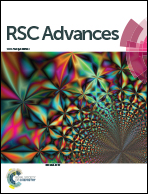Effect of apple, baobab, red-chicory, and pear extracts on cellular energy expenditure and morphology of a Caco-2 cells using transepithelial electrical resistance (TEER) and scanning electron microscopy (SEM)
Abstract
The present study investigated the effects of four food extracts on the Caco-2 intestinal cell line using a new transepithelial electrical resistance method (TEER) concurrent with electron microscopy (SEM). Caco-2 cells are widely used in transepithelial studies because they can be cultured to create a selective permeable interface similar to that between the intestinal lumen and the basolateral tissue. These cells absorb, secrete, and function as a barrier that limits the passive transepithelial diffusion of hydrophilic solutes from the digestive tract into the circulation. The intercellular tight junctions provide a limiting barrier to the movement of the solutes through the paracellular route. The integrity of this tissue must be maintained when studying cellular physiology. TEER provides useful information on cellular function when a tissue in chemical equilibrium is perturbed by an external compound (such as nutrient, drug, pathogenic microorganism or toxins). In order to restore this equilibrium, the cells need to expend energy that can be calculated through a mathematical TEER value. The change in energy from the equilibrium value depends on the time elapsed and the nature and concentration of the test substance. The results show that extracts of four commercial foods (with the total phenolic content shown in mg g−1 gallic acid equivalents) – apples (3.39), baobab (130), red chicory (13.31), and pears (1.15) induced concentration-dependent changes in both the energy and histology (morphology) of the cells as well as the formation of mucopolysaccharide. These changes, reported graphically and mathematically, were altered in the presence of the free radical (oxidant) 2,2′-azobis (2-amidinepropane) dihydrochloride (AAPH). At highest concentration, measured, the food extract with the highest phenolic content (baobab) completely damage the cells. The new simple in vitro TEER assay offers a novel approach to investigate the influence of nutrients, antinutrients, food toxicants, and drugs on the physiology and morphology of the Caco-2 cells that may predict their behavior in the digestive tract.


 Please wait while we load your content...
Please wait while we load your content...